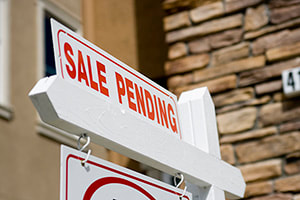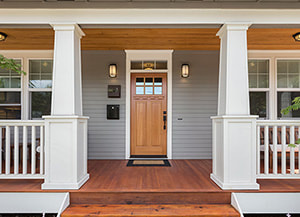 As the buyer, you should pay close attention during the closing process. A home purchase can fall through because the buyer’s financing does not get approved, the home appraisal comes in lower than expected, there are major home inspection problems, or in rare cases, there are problems with the seller’s title and ownership. Don’t miss these six tips: The Abstract of Title or Title Insurance Binder This document gives you the entire ownership history of the home and it’s a good idea to at least read the Requirements and Exceptions items. In order for the binder of title insurance coverage to issue a policy, the title insurer will have some requirements, such as a seller’s ex-spouse providing a quitclaim deed to relinquish any possible future claims, or for payoff of the current seller mortgage and any liens against the property. The Homeowner Association Documents These are usually delivered as a part of the title insurance binder documents but could also be available separately. Carefully read the restrictions the HOA enforces. For example, if you love the double-wide parking area in your future home’s driveway and envision parking your covered boat there, you don’t want to move in only to find out that the HOA prohibits this kind of vehicle parking. Read the Inspection Report The single most common reason for failure to close is the inspection report and major defects discovered. Read it carefully, and even if you are okay with the issues, you can negotiate for pre-closing repairs or, in some cases, money for agreeing to fix them yourself after closing. Look at Mechanic’s Liens These will show up in the title documents and will be paid off out of seller funds at closing, but pay attention to the lienholders. You have the inspection report and the seller disclosure of known defects in the home. If there are liens for basement repairs or roof repairs, make sure these are documented in the seller’s disclosure. If those repairs are not listed in the disclosure, could the seller be hiding other problems? Consider an inspection for mold activity. Don’t Lock In Your Interest Rate Too Soon You shouldn’t lock in your interest rate before your mortgage has been approved. Should there be problems with the mortgage, the time to resolve them could result in your interest rate expiring before closing. Pay Attention to Due Dates and Other Seller Requirements In the rare case that you as a buyer want to exit a deal for any reason, you can use the seller’s failure to fulfill required contingencies or deliver documents by their due dates to back out of the deal and not forfeit your earnest money.
0 Comments
 For the fourth month in a row, existing-home sales fell, according to the National Association of Realtors (NAR). Yet the decline was moderate, and all four sales regions of the country posted year-over-year sales gains. According to Lawrence Yun, chief economist for the NAR, a “lack of inventory continues to be the overwhelming factor holding back home sales, but falling affordability is simply squeezing some first-time buyers out of the market.” Despite this, Yun sees encouraging signs in the housing market: “Supply is expected to improve, which will give buyers more options and help tamp down record-high asking prices for existing homes.” More Housing Inventory Needed The increase in inventory levels cannot come soon enough. At the end of May, there were 1.23 million available units on the housing market, a level of inventory that was 7% higher month over month but 20.6% lower year over year. At the current sales pace, inventory levels would supply the market for just 2.5 months, a slight improvement from the 2.4-month supply in April but down significantly from the 4.6-month supply available in May 2020. The average property remained available for sale for just 17 days in May, unchanged from a month earlier but down from 26 days a year earlier. Of all the homes sold in May 2021, 89% remained on the market for just 30 days or less. Prices Up 23.6% The lack of supply is having a direct—and striking—impact on home prices. In May, the median existing-home price soared to a record-high $350,300, marking the 111th straight month of year-over-year price increases since March 2012. In comparison, in May 2020, the average home price reached $283,500. Every sales region in the country posted increases in median sales prices. Who’s Buying Homes? First-time buyers are often the first to be priced out of the housing market by rising prices. This group accounted for just 31% of all home sales in May, unchanged from April but down from 34% in May 2020. According to the NAR “2020 Profile of Home Buyers and Sellers,” first-time buyers represented 31% of the buying public in all of 2020. Meanwhile, a significant number—23%—of May’s transactions were all cash. Individual investors and second-home buyers, two groups who account for many all-cash sales, were responsible for 17% of all transactions in May, unchanged from a month ago and up from 14% from a year ago. Regional Breakdown Northeast – Existing-home sales annual rate of 720,000; a decrease of 1.4% from April 2021 but an increase of 46.9% from May 2020. At $384,300, the median sales price increased 17.1% from May 2020. Midwest – Existing-home sales annual rate of 1.31 million; an increase of 1.6% from April 2021 and 27.2% from May 2020. At $268,500, the median sales price increased 18.1% from May 2020. South – Existing-home sales annual rate of 2.59 million; a decrease of 0.4% from April 2021 and an increase of 47.2% from May 2020. At $299,400, the median sales price increased 22.6% from May 2020. West – Existing-home sales annual rate of 1.18 million; a decrease of 4.1% from April 2021 but an increase of 61.6% from May 2020. At $505,600, the median sales price increased 24.3% from May 2020.  A homeowner’s association (HOA) is a private organization that oversees a group of homes in a community, common in condominiums, town houses, and master-planned subdivisions. The HOA is managed by a board of directors elected by the community’s residents, and anyone who buys a home in an HOA neighborhood is required to become a member and abide by the organization’s rules. Here’s what an HOA does for you: Protects Home Values HOAs enforce specific rules designed to maintain uniformity and uphold neighborhood appearances. For example, some HOAs prohibit residents from parking broken-down vehicles on front lawns, letting their grass grow too tall, or building unsightly attractions. An HOA may also enforce noise restrictions and curfews. Well-maintained and safe neighborhoods are more likely to draw in potential buyers. Provides a Sense of Community Forming an HOA fosters a greater sense of community among the residents. Neighbors have the opportunity to meet one another when using their shared amenities, attending HOA meetings, or participating in organized social events such as block parties. Maintains Common Areas and Funds Amenities The homeowner’s association is responsible for maintaining the neighborhood’s common landscaping areas, which sometimes means planting trees and mowing the lawn in front of each home. Many HOAs also feature perks like community swimming pools, playgrounds, or tennis courts, all maintained and funded by the HOA. Enforces Rules and Restrictions With some stricter HOAs, you may need approval to make changes to your home’s exterior—even minor ones such as what color you can paint your door or how high a fence can be. There may also be restrictions on renting out your home or a limit on how many people can live there. Violating HOA rules could result in hefty fines. Determines Costs of Benefits Living in a community with an HOA has advantages, but you will need to pay HOA fees on a monthly or yearly basis. Generally, the more special features the neighborhood has, the higher the HOA costs will be. Living in a community with an HOA can be a great option for homeowners. However, it’s not the right choice for everyone. Consider the benefits and drawbacks of an HOA as you look for your new home.  Whether you are buying your first house or selling off your family home, there are excellent reasons to enlist the help of a skilled real estate agent. Here are just a few: 1. Pricing Guidance A real estate professional who is familiar with your local market is an invaluable asset when it comes to home pricing and valuation. If you're buying a property, the agent should be able to tell you if it is priced at or above market value. When selling, your agent will be able to tell you what price to list the property to ensure a quick sale and maximum profit. 2. Negotiation Skills An agent handles countless real estate transactions every year and is familiar with negotiation. Using this experience, a skilled real estate agent can get the best deal for their client. Of course, a good agent won't just negotiate on the selling price. They will negotiate concessions on terms such as inspection periods and earnest money. It's worth working with a professional who can ensure you're getting the best deal possible. 3. Insider Information Though some real estate data is available to the general public online, there is information that is only available to a market insider. When trying to buy a home, your agent may know about some houses that haven't even hit the market yet, giving you a head start over the other buyers in your area. When selling, your agent may know of a buyer who is interested in purchasing your property without ever having to list it publicly. 4. Paperwork Preparation Every real estate transaction involves a pile of paperwork; making a mistake on these documents can have huge and expensive consequences. Working with a professional real estate agent will ensure that everything is completed in a timely and accurate manner. All you'll need to do is sign on the dotted line.  A school district's rating is an important consideration when buying a home, at least according to many real estate investors. Homes in top-rated school districts tend to cost more. As a result, buyers sometimes find themselves choosing between nice homes in low-rated school districts and underwhelming properties in better districts. The decision is important for parents who don't homeschool their kids, but what about prospective homeowners without children? For the childless homeowner, the quality of education in a particular district may appear to be irrelevant, but is it? On paper, buying a home in a low-rated school district can get the buyer more home for less money. But many real estate experts will advise buyers to go for a more expensive home in a better school district for a couple of important reasons. 1. Holds Its Value. Homes in better school districts tend to keep their value, while homes located in average or low-rated school districts devalue the quickest. 2. Easier to Sell. A home in a top-rated school district is usually easier to sell, since it's more attractive to parents. 3. More Buyer Interest. Along with parents, investors often go after homes in good school districts. The result is that these homes get more views on real estate listing websites and sell faster. If buying in a top-rated school district is beyond your budget, there are financial reasons to buy in a less-than-perfect school district. School District Ratings Can Change When a buyer is already paying a premium to be in a top-rated school district, there isn't always a significant potential for gain. Prospective buyers should also keep in mind that homes in good school districts can be risky. The home may only retain its value if the school district continues to be highly rated. If school ratings slip, so will the district's home values. In comparison, a home in a low-rated school district can see its value go up if the district gets a better rating. Property Taxes Are Lower Another reason to buy in a low-rated school district is the taxes. Property taxes tend to be considerably higher in good school districts. While a school district's rating is certainly worth considering, there's much more to home value. For example, nearby amenities and local government can affect a home's resale price. For homebuyers with no plans to have children, those other factors may be more important than the school district.  If you’re contemplating putting your home on the market, it’s a good idea to evaluate what your home has to offer and how it might stack up against the competition. Many buyers prefer features involving comfort and convenience. Here are six common features homebuyers look for: Open Floor Plans A spacious home is high on every buyer’s wish list. Open floor plans make even modest spaces seem larger simply because your eye can see farther before coming up against a wall. Adequate natural lighting also adds to the feeling of spaciousness. Uncluttered windows free from heavy draperies or blinds allow the maximum amount of light to enter a room. Hardwood Flooring This rich and expensive-looking flooring has grown in popularity in recent years, and it’s also easier to keep clean than carpet. Simply add an area rug to bring a splash of color to the neutral wood. Energy Efficiency Being energy efficient is high on everyone’s list of desirable characteristics. Double- or triple-pane windows help keep the home warm in the winter and cool in the summer and provide great savings on utility bills. If your furnace is decades old, it will never be as efficient as a newer model. Lots of Storage Having numerous places to store belongings is usually on the top of a buyer’s checklist. Adequate closets in bedrooms, storage in the basement or attic, and extra space in the garage will appeal to buyers. Unfortunately, you may not have a lot of control over the available space. Try to make the storage space you do have seem ample by reducing the amount of clutter stored there. Attractive Outdoor Space Decks, patios, fenced-in yards, and exterior lighting are very desirable to homebuyers. Show off the space you have to its best advantage with plants, outdoor furniture, and a grill. This will provide a comfortable atmosphere for entertaining and relaxing. Eat-In Kitchen The kitchen is called the heart of the home for a reason. It provides an informal area for breakfast on the run, children’s meals, and quiet moments to relax with a cup of coffee. Having a spacious, eat-in kitchen is high on the want list for most buyers. You can’t always match all the items on every homebuyer’s wish list. But if you know what most people are looking for, you can arrange your home to emphasize its best features.  For the 107th month in a row, national home prices climbed year over year, according to the National Association of Realtors (NAR). Every sales region in the country posted price increases, with the median existing-home price rising 14.1% from a year earlier. The rising sales prices, however, did little to deter buyers, as every sales region posted year-over-year double-digit increases in existing-home sales. When comparing month-over-month sales activity, rates varied from region to region. The demand for homes is reflected in the rate at which homes are remaining on the market. In January, the average home sold in just 21 days, unchanged from December but down significantly from the 43 days a home remained available just a year ago. Of all the homes sold in January 2021, 71% were sold in under one month. Buyers Compete for Scarce Listings The high demand for homes is reflected in the ongoing housing shortage. At the end of January, there were just 1.04 million homes available for sale, down 25.7% year over year. NAR has never recorded a decline in inventory so severe. At the current sales pace, the stock of houses would supply the market for only 1.9 months, unchanged from December but down from the 3.1-month supply recorded a year ago. According to Lawrence Yun, chief economist for NAR, "Home sales continued to ascend in the first month of the year, as buyers quickly snatched up virtually every new listing coming on the market." He adds that sales could have been as much as 20% higher if there was more inventory on the market and buyers had more choices. Housing Remains a Bright Spot in U.S. Economy Unlike other parts of the U.S. economy, the housing market seems to be immune to the effects of COVID-19. In every tracked metro area, home prices increased during 2020's fourth quarter. "Home sales are continuing to play a part in propping up the economy," said Yun. "With additional stimulus likely to pass and several vaccines now available, the housing outlook looks solid for this year." In addition, as employment rates continue to improve, homebuying is expected to increase in the coming months. According to Yun, existing-home sales will climb to a minimum of 6.5 million in 2021. Though he predicts rising mortgage rates due to budget deficits and climbing inflation, Yun believes sales will remain strong. First-Time Buyers See Potential First-time buyers accounted for 33% of all purchases in January, up from 31% a month ago and 32% a year ago. According to the NAR "2020 Profile of Home Buyers and Sellers," first-time buyers made up 31% of the buying public in 2020. Individual investors and second-home buyers—a group who account for most all-cash sales—were responsible for 15% of all home purchases, up from 14% in December but down from 17% in January 2020. Of all sales transactions, 19% were all cash, unchanged from a month ago but down from 21% a year ago. Meanwhile, distressed sales—including foreclosures and short sales—accounted for fewer sales, representing just 1% of all transactions in January. This was unchanged from a month ago but down 2% from January 2020. Regional Breakdown Nationwide, January's existing-home sales climbed to a seasonally adjusted annual rate of 6.69 million. This was a 0.6% increase month over month and a 23.7% increase year over year. Northeast - Existing-home sales annual rate of 870,000; a decrease of 2.2% from December 2020 but an increase of 24.3% from January 2020. The median sales price, $361,400, increased 15.8% from January 2020. Midwest - Existing-home sales annual rate of 1.57 million; an increase of 1.9% from December 2020 and 22.7% from January 2020. The median sales price, $227,800, increased 14.7% from January 2020. South - Existing-home sales annual rate of 2.94 million; an increase of 3.2% from December 2020 and 25.1% from January 2020. The median sales price, $263,300, increased 14.6% from January 2020. West - Existing-home sales annual rate of 1.31 million; a decrease of 4.4% from December 2020 but an increase of 21.3% from January 2020. The median sales price, $461,800, increased 16.1% from January 2020.  A typical step in nearly every home-buying process is a home inspection. This is when a certified home inspector examines the house's structure and systems looking for issues such as a cracked foundation, significant termite damage, or improper wiring. The inspection usually occurs after a purchase offer has been accepted and can be a point of renegotiation should problems turn up. When you're in a seller's market, competition among buyers can lead to bidding wars, causing some buyers to waive contract contingencies such as the home inspection. Redfin, a nationwide real estate listings website, revealed that by midyear 2020, 1 in 5 of the accepted offers handled by their agents included a waiver of the home inspection. But is it a good idea to skip a home inspection? Waiving a Home Inspection Contingency Is Risky It's one thing to have to fix a faulty furnace or replace a dishwasher, but it's another thing entirely if a home has major structural damage. Any structural repairs are costly and sometimes even impossible to fix. Your mortgage provider might even insist on a home inspection before approving your loan depending on when the home was built and where it's located. There are Other Ways to Boost Your Bid When you fall in love with a house and would do anything to get it, you might be tempted to forgo the safeguard a home inspection provides. Consider these alternative options for making your bid stand out: You could remove the appraisal contingency, meaning you'd have to bring more cash to the table if the home doesn't appraise for an amount that suits your mortgage lender. You could be flexible with the closing date, allowing the seller to set the timeline for moving. You could also offer to pay the seller's closings costs. These solutions all mean coming up with more cash, but eliminating the inspection could also wind up being costly. Protect Yourself as Best You Can If you're in an extremely competitive market with multiple-bid situations that might require waiving your contingencies, you could have a contractor or inspector tour homes with you. They might notice problems you don't, and if the problems are big enough, you'll know to avoid the home entirely. Home warranties can also be purchased for around $400 for one year and can be extended for years with additional premiums. To protect yourself further, search public records to see if any permits have been issued for major work on the property, as any large jobs require permits. In hot markets, bidding wars among home buyers are common. It might be tempting to waive your home inspection contingency to make your bid stand out. Consider carefully, though, before taking such a risk and try to protect yourself against any possible ramifications.  According to the National Association of Realtors (NAR), 2020 home sales climbed to the highest level seen since 2006. The year closed with positive gains in existing-home sales, with every sales region in the country posting double-digit year-over-year increases in December. Median existing-home prices were also up in every region, rising an average of 12.9% from a year earlier. December marked the 106th consecutive month of year-over-year price gains. According to Lawrence Yun, chief economist for NAR, the housing market should continue to show strength in the coming months. “Although mortgage rates are projected to increase, they will continue to hover near record lows at around 3%. Moreover,” he adds, “expect economic conditions to improve with additional stimulus forthcoming and vaccine distribution already underway.” Fewer Listings to Choose From The rise in home prices can be attributed in part to the lack of supply. In December, total housing inventory fell 16.4% from a month earlier and 23% from a year earlier. At the current sales pace, all unsold inventory would supply the market for only 1.9 months —an all-time low. In comparison, there was a 2.3-month supply available in November 2020 and a 3.0-month supply in December 2019. Homebuilders and construction companies are helping to alleviate the shortage of homes; housing starts reached an annual rate of close to 1.7 million, with a high percentage of that focused on single-family homes. However, according to Yun, “It will take vigorous new home construction in 2021 and in 2022 to adequately furnish the market to properly meet the demand.” Properties Flying off the Market One consequence of high demand and low supply is that homes are being sold in record time due to increased competition. In December, the average property remained on the market for only 21 days, unchanged from a month earlier but down from the 41 days recorded in December 2019. Of all the homes on the market in December 2020, 70% sold in less than one month. Who’s Buying Homes? First-time buyers remained optimistic about the housing market. This group accounted for 31% of all sales in December, unchanged from a year earlier. According to the NAR “2020 Profile of Home Buyers and Sellers,” first-time buyers made up 31% of all buyers in 2020. Individual investors and second-home buyers—a group responsible for many cash sales—accounted for 14% of all market activity in December. All-cash sales made up 19% of December’s transactions. Foreclosures and short sales accounted for less than 1% of all sales. Regional Breakdown for December 2020 Northeast - Existing-home sales annual rate of 930,000; an increase of 4.5% from November 2020 and 27.4% from December 2019. At $362,100, the median sales price increased 19% from December 2019. Midwest - Existing-home sales annual rate of 1.59 million; sales remained unchanged from November 2020 but increased 26.2% from December 2019. At $235,700, the median sales price increased 13.7% from December 2019. South - Existing-home sales annual rate of 2.86 million; an increase of 1.1% from November 2020 and 20.7% from December 2019. At $268,100, the median sales price increased 11.3% from December 2019. West - Existing-home sales annual rate of 1.38 million; a decrease of 1.4% from November 2020 but an increase of 17.9% from December 2019. At $467,900, the median sales price increased 14.2% from December 2019.  Low inventories for homes across the United States have created a seller’s market. When the supply of homes on the market is low and the demand is high, prices rise and buyers often have to compete against one another. How do you win when there are multiple offers on the table? A home that’s in good shape and priced right will have homebuyers vying for it within days—or even hours—of hitting the market. The potential buyer with the most attractive offer is likely to wind up winning. Here are three tips for making a strong offer: Make Your Best Offer First In a seller’s market, in which there are lots of competing buyers, homes usually sell at or above asking price. If you make an offer and there are multiple offers higher than yours, you likely won’t get a counteroffer. If you have a price in mind that you’re willing to pay for a home you love and you can afford the payments that go with it, it’s a good idea to make your best offer first. A low-ball offer can kill negotiations before they even start. Be Flexible with the Timeline The timeline of the sales process is often important to sellers. They might have mortgage payments on their new home starting soon and will push for a fast close, or if they don’t have another place yet, they’ll want to push back the closing date as long as possible. When making an offer, it’s reasonable to consider the seller’s timing wishes. If you can be flexible, your offer will be more appealing. Are You Willing to Waive It? The less contingencies, the more attractive your offer will be. You may be tempted to waive your right to a home inspection or the inspection contingency that allows you to back out of the sales contract. Similarly, you might be willing to forgo an appraisal contingency, which would mean you’d bring more money to the table at closing. Remember, contingencies are mostly in place to protect homebuyers. It’s important to consult with an experienced real estate agent before agreeing to waive any protections. It can be nerve-wracking to be a homebuyer in a seller’s market. The excitement that comes with finding the perfect home can quickly disappear when you find out the home has multiple offers. Make your best offer upfront and be as flexible as possible to ensure a good chance at securing your dream home. Return to Newsletter |
AuthorA variety of pertinent real estate topics and tips from various authors and contributors. Archives
December 2024
Categorieshow much home can i afford?*
|


